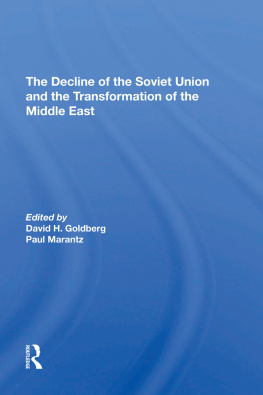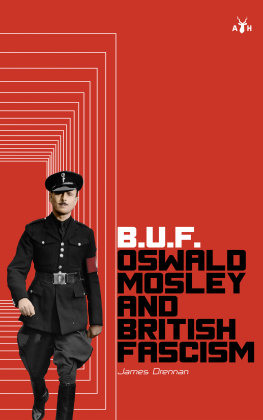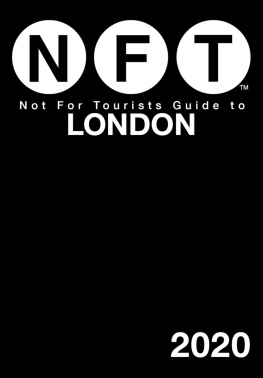First published 1996 in Great Britain by
FRANK CASS & CO. LTD
2 Park Square, Milton Park,
Abingdon, Oxon, OX14 4RN
and in the United States of America by
FRANK CASS
270 Madison Ave,
New York NY 10016
Transferred to Digital Printing 2005
1996 Thomas P Linehan
British Library Cataloguing in Publication Data
Linehan, Thomas P.
East London for Mosley: the British Union of Fascists in east London and south-west Essex, 193340
1. British Union of Fascists England Essex History 20th century 2. British Union of Fascists England London History 20th century 3. Fascism England Essex History 20th century 4. Fascism England London History 20th century
I. Title
324.2421038
ISBN 0-7146-4568-0 (cloth)
ISBN 0-7146-4268-1 (paper)
Library of Congress Cataloging-in-Publication Data
Linehan, Thomas P.
East London for Mosley: the British Union of Fascists in East London and South-West Essex, 193340 / Thomas P. Linehan.
p. cm.
Includes bibliographical references and index.
ISBN 0-7146-4568-0. ISBN 0-7146-4268-1 (pbk.)
1. East End (London, England)Politics and government. 2. Great BritainPolitics and government19361945. 3. Great Britain Politics and government1910-1936. 4. FascismEnglandLondon- History20th century. 5. FascismEnglandEssexHistory20th century. 6. Essex (England)Politics and government. 7. British Union of Fascists. 8. Mosley, Oswald, Sir, 18981980. I. Title. DA685.E1L56 1996
320.94267dc20
96-18660
CIP
All rights reserved. No part of this publication may be reproduced in any form, or by any means, electronic, mechanical, photocopying, recording or otherwise, without the prior permission of Frank Cass and Company Limited.
Typeset by Regent Typesetting, London
Cover photographs: Uniformed Bethnal Green Mosleyites assemble in Victoria Park, Bethnal Green, for a march c.1936, and an enthusiastic mass East End audience listens to Mosley at Salmon Lane, Limehouse, in Stepney, on 14 October 1936, ten days after the Battle of Cable Street.
Back cover photograph shows a column of uniformed suburban fascists on the march in south-west Essex.
Preface and Acknowledgements
It is necessary at the outset to explain the focus and scope of this book. It is essentially a study of the membership of the British Union of Fascists in a particular locality in Britain, the nature of fascist motivation and the local context of branch recruitment. Inevitably, because of restrictions of space, this book cannot cover all the topics pertaining to the BUF. Much less emphasis is given to topics such as political violence, state responses to fascism and the politics of the anti-fascist opposition, for example, which are dealt with extensively in the existing literature on the BUF.
On occasions it has been necessary, for obvious reasons, to conceal the identity of an individual. This applies in particular, though not exclusively, to the former members and supporters of the BUF who were interviewed for this project.
I should like to express my gratitude to the following individuals and institutions who have helped in some way in the preparation and completion of this book. My first debt is to Brunel University College for granting me leave of absence in order to prepare the manuscript for publication, and to the Economic and Social Research Council for providing me with a research grant whilst I was a postgraduate at Royal Holloway and Bedford New College, University of London, which made research for this project possible in the first place.
A particular debt is owed to my doctoral supervisor, Geoffrey Alderman, for his immeasurable advice, support and sheer professionalism throughout my period as a research student, and, as the project matured, his friendship. Other scholars and friends who have offered advice and encouragement along the way include Tony Kushner, Andrew Mitchell, Colin Holmes, Martin Durham and my colleagues at Brunel University College, both in the History Section and the Arts Department. Thanks also are due to Michael Biddiss and Ben Pimlott for their positive appraisal and helpful comments on examination of my doctoral thesis.
Philip Rees at the University of York, who provided the initial stimulus for much of this project, is also deserving of thanks, as are my former tutors at York, Claire Cross, Bill Trythall and Joanna de Groot, in particular, for their general encouragement.
I would also like to thank Norma Marson, David Michael and Robert Easton at Frank Cass for their patience and helpful advice during the publication process and to Jacqueline Lewis who copy-edited the manuscript.
Much of first appeared in the essay, The British Union of Fascists in Hackney and Stoke Newington, 193340, in G. Alderman and C. Holmes, (eds.), Outsiders and Outcasts: Essays in Honour of William J. Fishman (London, 1993). I am grateful to Gerald Duckworth and Co. Ltd. for kindly granting me permission to reproduce this material.
It is a pleasure also to acknowledge the help of archivists and librarians who granted me permission to consult material, including David Massel at the Board of Deputies of British Jews, Christopher Woolgar at the Parkes Library, University of Southampton, Richard Storey at the Modern Records Centre, University of Warwick and Brian Dyson at the National Council for Civil Liberties Archive, University of Hull. I am also indebted to the archivists and staff at the Mass Observation Archive, University of Sussex. I also wish to thank archivists, librarians and staff at the British Library of Political and Economic Science, British Newspaper Library, Electoral Reform Society, Greater London Record Office, Hackney Archive, Labour Party Archive, Public Record Office and Tower Hamlets Local History Library.
The contribution of private collectors and researchers who provided me with otherwise unobtainable primary source material and invaluable pieces of empirical information, particularly John Millican and Geoffrey Wallder has also been greatly appreciated. I owe a particular debt to the former members and supporters of the BUF who kindly entrusted their memories to me. Locating their whereabouts and securing their trust and co-operation was sometimes difficult, but the experience for the historian was certainly worthwhile. In this enterprise of locating former members I was fortunate to secure the help of Fred Bailey and John Christian, the editor of Comrade. The oral testimony of the former and the invaluable assistance of the latter, has constituted an indispensable component of this project. Acknowledgements are also due to individuals who kindly provided photographic material for this book, particularly John Christian, and to the Greater London Record Office for permission to reproduce the maps.















